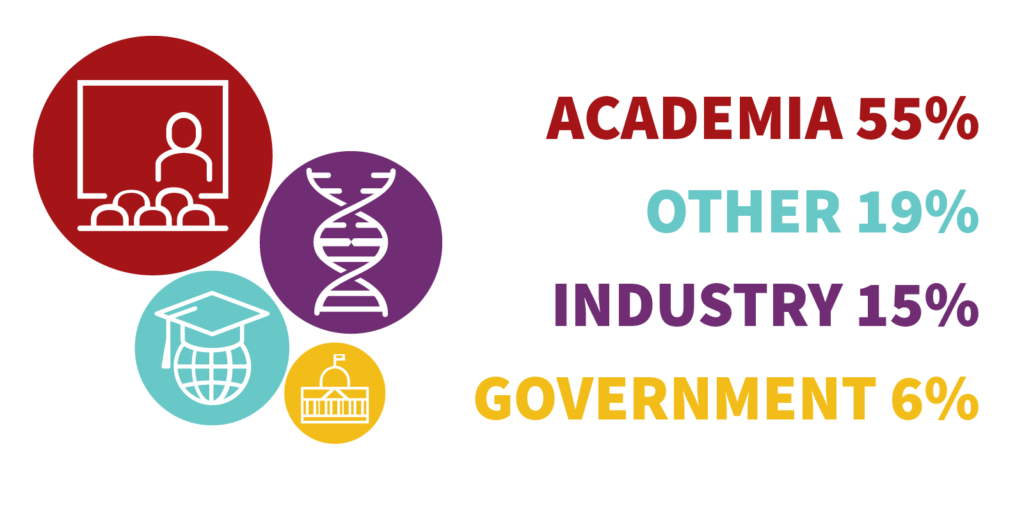
Washington University in St. Louis has a long tradition of excellence in the neurosciences. Here, Erlanger first measured nerve conduction velocity and its relation to axon diameter. In the 1950s, Levi-Montalcini, Cohen and Hamburger discovered the first neuronal trophic factor, nerve growth factor. Today, a large and interactive faculty focuses interest on almost every area of modern neuroscience ranging from molecular analysis of ion channels to positron emission tomography of the human brain to the genetics of human brain diseases.
Faculty from the departments of Neuroscience, Anesthesiology, Biochemistry and Molecular Biophysics, Biology, Biomedical Engineering, Cell Biology and Physiology, Developmental Biology, Genetics, Molecular Microbiology, Neurology, Neurosurgery, Ophthalmology and Visual Sciences, Pathology and Immunology, Physics, Psychiatry, Psychological & Brain Sciences, and Radiology serve as advisers for thesis research and serve as teaching faculty in the neurosciences. The remarkable breadth of faculty interests in neuroscience at Washington University guarantees a student’s exposure to a wide range of current neurobiological problems and approaches.
Students in the Neurosciences (NS) program will typically take five (5) courses during their first year. Students will also participate in three laboratory rotations over the fall and spring semesters of Year 1 prior to selecting a thesis lab. Students are expected to complete the following coursework during their entire graduate education:
DBBS required courses
Graduate Research Fundamentals
Ethics and Research Science – typically taken in Year 2
Program required courses
Cellular Neurobiology
Neural Systems
1st Year Fundamentals
Coding and Statistical Thinking in the Neurosciences
Oral Presentation of Scientific Data
Specialized advanced electives
Anytime after their Qualifying Exam (QE), students take 2 or more ‘nanocourses’ of their choice from rotating topics (often inspired by current student interests).
Journal clubs
Students can select from a variety of ongoing journal clubs that best align with their interests, with topics ranging from circuits to behavior to glial biology.
Qualifying exam
Students take a qualifying exam approximately 12 months after entering the program. Following a successful QE defense, students will identify and finalize their committee and complete their thesis proposal by December 31 of Year 3.
Thesis committee, proposal, and defense
In the summer and/or fall semesters of Year 2 after rotations are completed, students will select a thesis advisor and begin working in their thesis labs. Students will then select a thesis committee and complete their thesis proposal. Students will complete their thesis research, defense, and graduation over the rest of their graduate career. Most students graduate within five (5) to six (6) years of beginning their program.
Retreats and other activities
Student community building is also encouraged by a yearly Neuroscience program retreats, student-led activities, and presentation competitions and awards. To learn more about these and other programs, resources, and workshops available within the larger neuroscience community at Washington University in St. Louis, visit the Office of Neuroscience Research.

Neurosciences graduates pursue a variety of careers. Most program graduates go into academia, but many find paths in industry, government, and other fields, like science communication, law, and business and entrepreneurship.
Faculty Co-Directors:
Graduate Program Administrator: